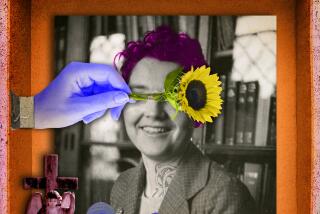Streets That Flow Sweetly Through the...
The French Symbolist Saint-Pol-Roux, according to one story, used to hang a sign outside his door when he retired for the night: “The Poet is working.” His was a serious joke: Sleep is a wellspring of poetry, a fountainhead in which dreaming and wakefulness, presence and absence, desire and death merge and swirl together. For poets in the Modern Age it is often a source of visions and prophecies. For the Mexican poet Xavier Villaurrutia (1903-1950) it is the subject of his major work, “Nostalgia for Death,” a hymn to sleep. Virtually unknown in this country, he “belongs to the class of poets and of men we need most today,” Nobel laureate Octavio Paz writes in his book-length essay on Villaurrutia, “Hieroglyphs of Desire”: “Those who neither affirm nor negate, but who doubt and question themselves.”
Surely his circumstances, the contradictions implicit in his life and work, contributed to his impulse to question himself. Openly homosexual, nevertheless Villaurrutia played a prominent role in Mexican society, working for the government and as a literary and drama critic. He is best remembered for his poetry, which amounts to only one-tenth of his collected writings; he endured long dry spells, which in turn became the subject of several fine poems. Imbued with a critical spirit, Villaurrutia was unable or reluctant to engage the most pressing issues of his day, and Paz is not afraid to chide his elder for his failure to address moral and political questions.
Villaurrutia’s poetic terrain was nocturnal, yet he knew that “Only the hand of someone who is wide awake can write the poem of sleep.” Drawn to the French Surrealists, he ignored the subversive nature of their enterprise and used their poetic strategies--juxtaposition, unsettling images, imaginative leaps--in a lucid fashion. “As he gave himself over to the flow of the unconscious,” Paz notes, “Villaurrutia was ever mindful of Vallery’s ‘wakefulness.’ ” Thus in many cases he employed traditional forms in order to explore material deemed appropriate, insofar as conventional Modernist wisdom was concerned, only for open forms. In short, tension, creative and destructive, what Paz calls “vital anxiety,” lies at the heart of Villaurrutia’s achievement.
It is what informs and haunts his best poems, those in which his contradictions change shapes and places; in his night music Villaurrutia’s questions are not so much answered as articulated in original and engaging ways. Here is the opening to “L.A. Nocturne: The Angels,” perhaps the earliest (1936) significant poem written about Los Angeles:
You might say the streets flow
sweetly through the night.
The lights are dim so the secret will
be kept,
the secret known by the men who
come and go,
for they’re all in on the secret
and why break it up in a thousand
pieces
when it’s so sweet to hold it close,
and share it only with the one
chosen person.
If, at any given moment, everyone
would say
with one word what he is thinking,
the six letters of DESIRE would
form an enormous luminous scar,
a constellation more ancient, more
dazzling than any other.
And that constellation would be like
a burning sex
in the deep body of night,
like the Gemini, for the first time in
their lives,
looking each other in the eyes and
embracing forever.
These lines capture some of the manic energy of an insomniac whose mind races in the dark, each image transforming itself at a furious rate.
Divided into three parts, “Nocturnes,” “Other Nocturnes” and “Nostalgias,” Villaurrutia’s book presents a circular journey around “Everything the night sketches/with its shadowy hand:/the pleasures it reveals,/the vices it undresses.” The result is a primer on making it through both the best and the worst of what the night can offer. As the poet declares at the end of “Nocturnal Stanzas”:
I will be dust in the dust, oblivi -
on’s oblivion,
but someone in the wretchedness of
some empty night,
without his knowing, without my
knowing, someone still unborn
will with my word speak the sorrows of his night.
There are by my count at least a dozen poems in “Nostalgia for Death” capable of fulfilling Villaurrutia’s prophecy.
The joint publication of this book with Paz’s superb “Hieroglyphs of Desire” makes this one of the most important collections in recent memory. The poems are printed en face, and Eliot Weinberger’s translations are at once faithful and compelling. Paz has written with his usual verve and insight, making the strongest possible case for one of the leading Contemporaneos. “Villaurrutia’s glory is secret, like his poetry,” Paz admits. “I don’t regret this and neither would he. He asked for nothing more than the fervent admiration of a few. In modern times poetry is not, nor can it be, more than an underground cult, a ceremony in the catacomb.” “Nostalgia for Death” and “Hieroglyphs of Desire” make that ceremony more interesting, more vital.
More to Read
The biggest entertainment stories
Get our big stories about Hollywood, film, television, music, arts, culture and more right in your inbox as soon as they publish.
You may occasionally receive promotional content from the Los Angeles Times.










